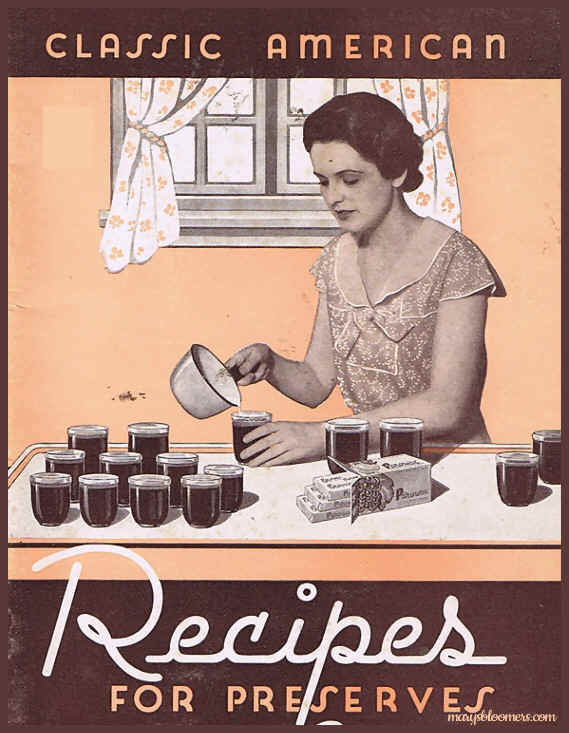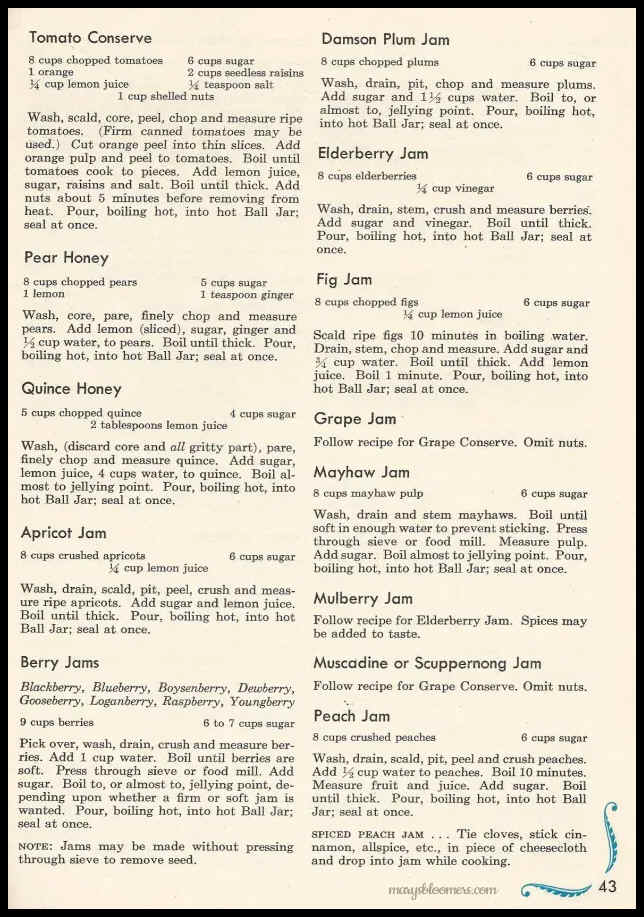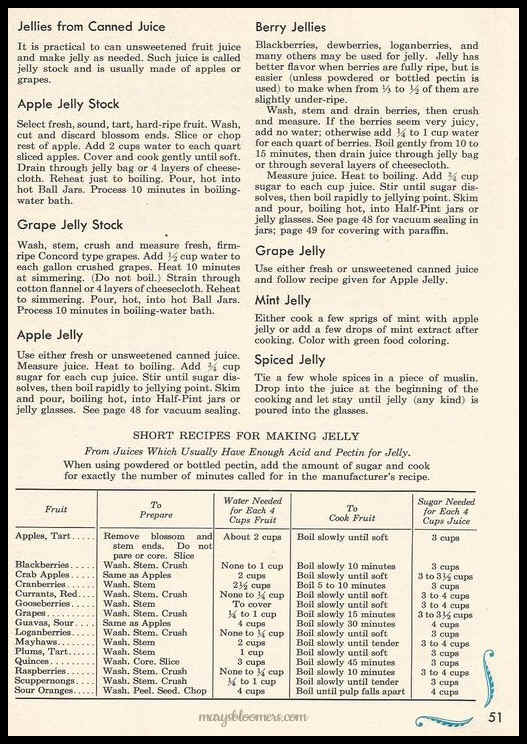|
|
Vintage Jams and Preserves
recipes - Preserving Jams and Jellies from your fruit pie garden Sources: A GOOD jam must keep well, and should be clear and bright in colour,
with a pleasant, fruity flavour, well set but not too stiff. FruitThe fruit must be fresh, and is best just ripe. Jam made from
over-ripe fruit may not set well. Most fruits, and some vegetables, can
be made into jam, but some contain more pectin and acid than others, and
jams made from these set more readily. Fruits of high setting quality include cooking apples, black
and red currants, damsons and gooseberries. Those of medium setting quality include apricots,
blackberries, loganberries, plums and greengages, and raspberries. Fruits of poor setting quality include cherries, pears, marrows and strawberries. The addition to these of lemon, red currant or gooseberry juice, or of citric or tartaric acid is often necessary. |
|
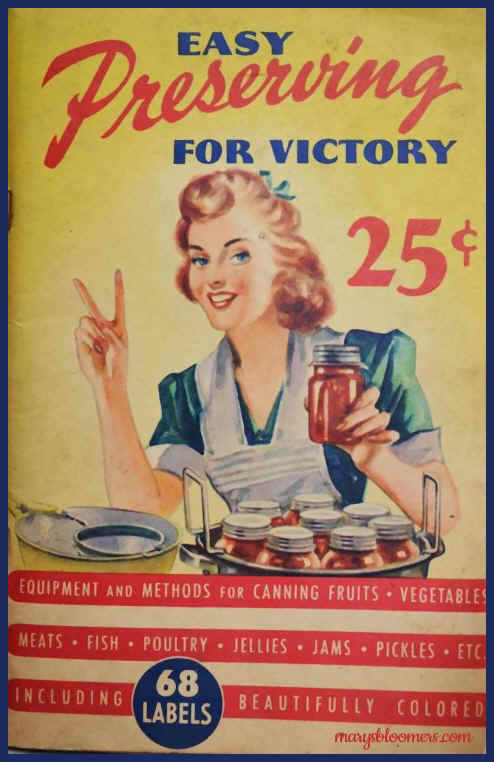 |
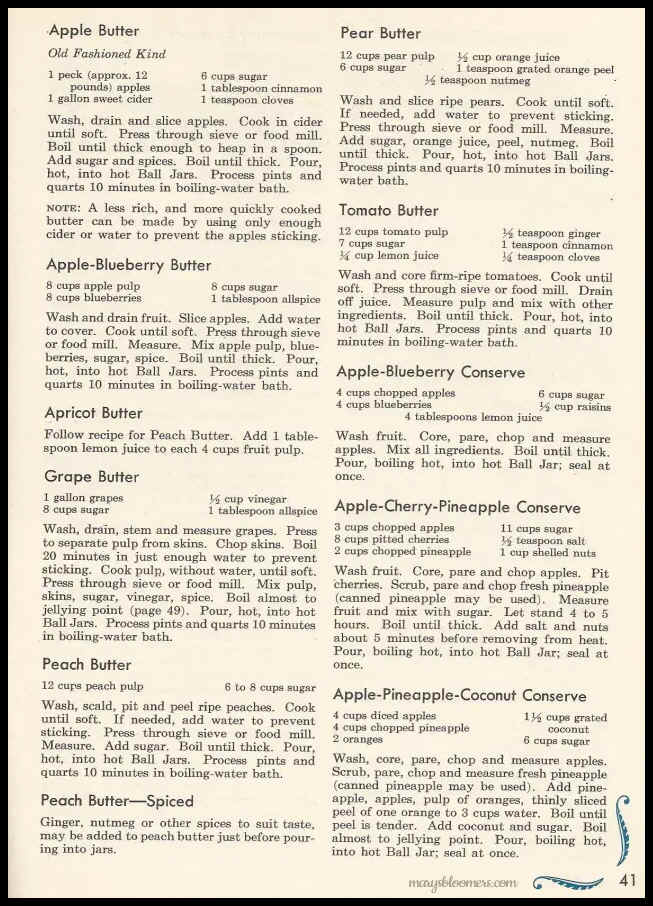 |
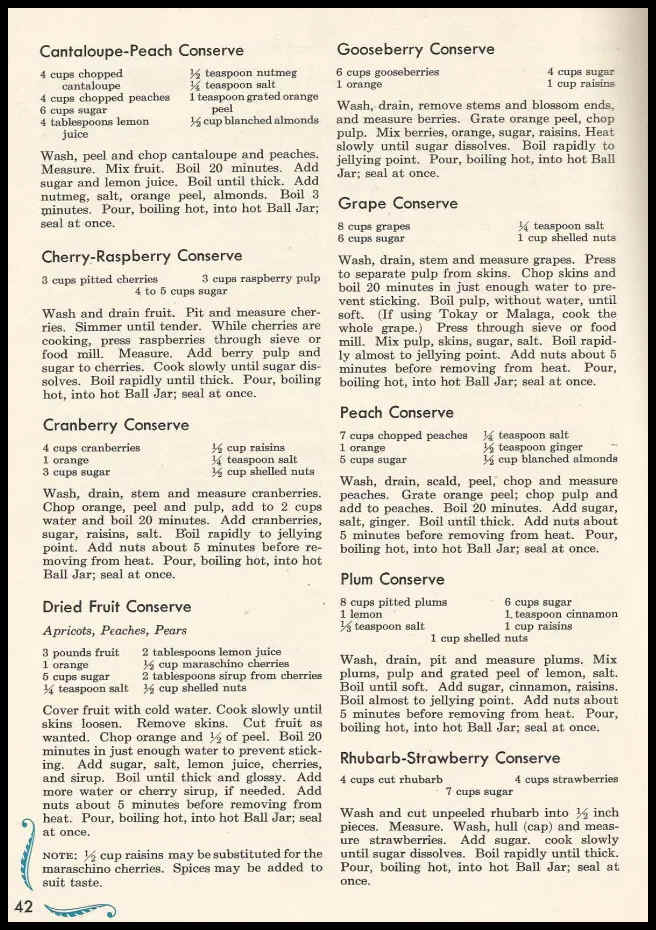 |
|
|
|
 |
 |
|
Content, graphics and design ©2021 marysbloomers.com
All rights reserved
